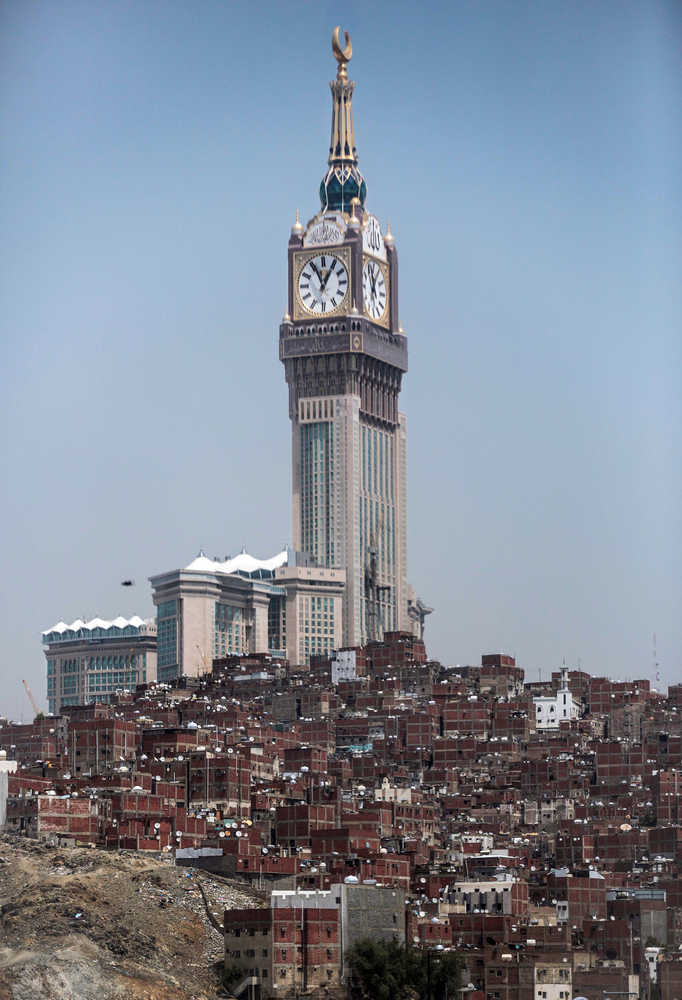RIYADH, Saudi Arabia — Saudi Arabia on Monday said this year’s budget deficit amounted to $98 billion as lower oil prices cut into the government’s main source of revenue, prompting the kingdom to scale back spending for the coming year and hike up petrol prices.
A royal decree announced that petrol prices would go up by 50 percent effective Tuesday. Even with that jump, Saudis will pay just 24 cents for a liter of 95 octane gasoline, less than a dollar per gallon. The Saudi-based Jadwa Investment estimates the government spends around $61 billion on energy subsidies annually, almost $11 billion of that on gasoline alone.
For two consecutive years the kingdom has posted a deficit, and it is planning for another budget shortfall next year, projected at $87 billion.
The deficits represent a sharp turnaround from just a few years ago, before oil prices tumbled in mid-2014. Instead of cutting oil production to drive prices up, Saudi Arabia has aggressively kept its production levels high in what analysts say is an attempt to keep its market share and stymie the reach of U.S. shale producers in the global market.
The Saudi government has been digging into its large foreign reserves, built up during years of higher oil prices. To cover the difference between its spending and revenue over the past year, Saudi Arabia has drawn its reserves down from $728 billion at the end of last year to around $640 billion.
The Saudi fiscal budget is being watched closely by investors to see how the kingdom plans to consolidate after years of heavy spending when oil prices were more than double what they are now. Benchmark U.S. crude was trading Monday at $37.46 per barrel on the New York Mercantile Exchange.
One area where the government is not cutting back is defense and security, where it allocated $57 billion (213 billion riyals) for 2016. Saudi Arabia has been leading a coalition against Shiite Houthi rebels in Yemen since March and is a member of the U.S.-led coalition battling the Islamic State group in Syria and Iraq.
The government said it is anticipating $137 billion (513 billion riyals) in revenue for the coming year, around $26 billion (95 billion riyals) less than the total for 2015. As is typical for the published version of the budget, it did not include a projected oil price.
Next year’s budget suggests Saudi Arabia is basing its revenue on an even lower price of $40 a barrel for export crude, if production remains at 10.2 million barrels per day, said Fahad Alturki, chief economist and head of research at Saudi-based Jadwa Investment. That’s less than the $56 per barrel priced into the projected 2015 budget.
In the 2015 budget, oil revenues accounted for 72 percent of total revenue as opposed to 87 percent in 2014. Coinciding with that drop, non-oil revenues rose by almost $10 billion from 2014.
Saudi Arabia and its Arab Gulf neighbors have been working to diversify their economies and decrease their dependence on oil, and to support the private sector to absorb the millions of young people coming into the workforce.
Saudi Arabia says it expects to spend $224 billion (840 billion riyals) in 2016, which is $5 billion (20 billion riyals) less than what had been projected for this year. However, the government has also put aside $49 billion (183 billion riyals) in discretionary spending to use on infrastructure projects if oil prices improve.
Nearly half of this year’s spending, or around $120 billion (450 billion riyals), went to wages, salaries and allowances. The budget revealed that the kingdom spent $30 billion more in 2015 than it had initially planned, reaching $260 billion (975 billion riyals) in total expenditures largely because of financial handouts King Salman doled out to the public when he ascended the throne earlier this year.
“There hasn’t been any major overspending, which shows the government’s determination to rationalize spending,” Alturki said. “I think it’s a positive signal.”
The London-based research consultancy Capital Economics said in a report issued this month that the Saudi budget takes on additional prominence because it is the first under the new monarch. The budget is also being heavily scrutinized as it was prepared under the guidance of a newly-formed Council of Economic and Development Affairs, which is headed by the king’s 30-year-old son, Deputy Crown Prince and Defense Minister Mohammed bin Salman.
This is not the first time for Saudi Arabia and other oil-producing Gulf countries to run budget deficits. When oil prices steeply dropped in 1986, Saudi Arabia ran a budget deficit for some 15 years, significantly increasing public and external debt until oil prices finally recovered in the 2000s.
__
Batrawy reported from Dubai, United Arab Emirates.

